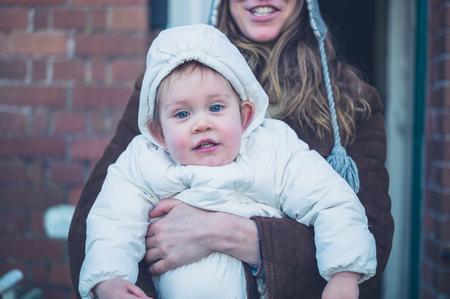Introduction to Stay-at-Home Dads in the UK
In recent years, the traditional landscape of family life in the United Kingdom has been undergoing significant transformation. One of the most notable changes is the increasing number of stay-at-home dads. Historically, caregiving and household responsibilities were predominantly seen as the domain of mothers, but contemporary British society is witnessing a shift in these long-standing gender roles. This change reflects evolving attitudes towards fatherhood, work-life balance, and gender equality.
According to data from the Office for National Statistics (ONS), there has been a steady rise in fathers taking on primary caregiving duties while mothers become the main breadwinners or pursue professional careers. This growing presence of stay-at-home dads is not only reshaping family dynamics but also challenging deep-rooted stereotypes about masculinity and parenting within the UK.
| Year | Percentage of Stay-at-Home Dads (%) | Key Social Trends |
|---|---|---|
| 2010 | 4.2 | Traditional roles still dominant |
| 2015 | 6.1 | Greater acceptance of flexible working |
| 2020 | 8.3 | Pandemic accelerates work-from-home options |
| 2023 | 9.5 | Focus on gender equality and shared parenting |
This evolution in family structure not only benefits children—who gain from having engaged fathers—but also supports mothers by creating more balanced partnerships. As stay-at-home dads become an increasingly visible part of British society, their experiences and challenges offer valuable insights into how families adapt to modern demands and expectations.
Historical Perspectives on Gender Roles in British Parenting
Traditionally, the landscape of parenting in the UK has been shaped by clear-cut gender expectations. For generations, mothers were predominantly seen as the primary caregivers, responsible for nurturing children and managing household duties. Fathers, on the other hand, were generally viewed as the family’s breadwinners, with their main role centred around providing financial support. These roles were deeply rooted in social norms and reinforced through cultural narratives, education, and even government policies.
Over time, however, these traditional roles have been subject to significant change. The late 20th century saw a gradual shift as more women entered the workforce and societal attitudes towards parenting began to evolve. Men increasingly sought a more active presence in their children’s lives, challenging the established norms and advocating for shared parental responsibilities. This evolution reflects broader movements towards gender equality and is particularly visible in modern British families today.
Comparing Traditional and Evolving Parental Roles
| Aspect | Traditional Role | Modern/Evolving Role |
|---|---|---|
| Mothers | Primary caregiver; homemaker | Caregiver & often employed; shared financial responsibilities |
| Fathers | Breadwinner; limited caregiving involvement | Active caregiver; involved in daily childcare and home life |
| Public Perception | Stereotyped roles; little flexibility | Increasing acceptance of diverse family structures and roles |
This ongoing transformation is further supported by legal reforms such as Shared Parental Leave (SPL), introduced in 2015, which allows both parents to share up to 50 weeks of leave following the birth or adoption of a child. Such measures empower fathers to take a more hands-on approach at home without facing the stigma that might have existed in previous decades.
The journey from rigid gender roles to more fluid parenting arrangements marks a significant cultural shift in the UK. Stay-at-home dads are now part of this broader narrative, actively redefining what it means to be a father—and a parent—in contemporary British society.

3. Challenges and Stereotypes Faced by Stay-at-Home Dads
Despite the increasing visibility of stay-at-home dads in the UK, these fathers often encounter a range of challenges rooted in societal attitudes and longstanding gender stereotypes. Traditional British culture has historically associated caregiving and domestic responsibilities with women, while men have been expected to fulfil the role of breadwinner. As such, stay-at-home dads can face significant social and emotional hurdles as they navigate their parenting journey.
Societal Attitudes and Misconceptions
The perception of masculinity in British society still leans towards men being providers rather than nurturers. This can lead to questioning or even criticism from peers, family members, and sometimes even health professionals. Common misconceptions include the belief that stay-at-home dads are less competent at caregiving or that they have taken on this role due to a lack of career ambition rather than a positive family choice.
Common Stereotypes and Their Impact
| Stereotype | Impact on Dads | Impact on Families |
|---|---|---|
| “Men arent natural carers” | Undermines confidence; increases stress | May affect childrens perceptions of gender roles |
| “Stay-at-home dads are unemployed” | Stigma; feelings of inadequacy | Financial pressure; social isolation for partner |
| “Dads cant manage household tasks” | Lack of support from community and services | Inequitable distribution of chores; increased strain on relationships |
Obstacles in Everyday Life
Beyond stereotypes, practical obstacles also persist. Many parenting groups and resources are still tailored primarily for mothers, which can make stay-at-home dads feel excluded or uncomfortable seeking support. Simple activities like attending parent-and-baby classes or playgroups may involve subtle biases, leaving fathers feeling like outsiders. Moreover, public facilities such as baby changing rooms are often located within women’s toilets, presenting further barriers to active fatherhood.
This combination of social stigma, structural limitations, and lack of tailored support services means that stay-at-home dads in the UK must often work harder to build supportive networks and advocate for their families’ needs. By recognising and addressing these challenges, British society can move closer to genuine gender equality in parenting.
4. Benefits for Families and Children
The increasing presence of stay-at-home dads across the UK is not only challenging traditional gender roles but also delivering tangible benefits to families, children, and society at large. Involved fatherhood and diverse caregiving contribute positively to household dynamics, child development, and the ongoing movement towards gender equality.
Positive Household Dynamics
When fathers take on primary caregiving roles, family routines and responsibilities become more balanced. This helps reduce the pressure on mothers to manage both work and home life, fostering a cooperative partnership that can lead to higher satisfaction for both parents.
| Aspect | Impact of Stay-at-Home Dads |
|---|---|
| Work-Life Balance | More equitable sharing of household duties and emotional labour |
| Parental Wellbeing | Reduced stress levels and improved mental health for both parents |
| Financial Flexibility | Greater flexibility in managing careers and childcare costs |
Child Development Advantages
Research consistently shows that children benefit immensely from having actively involved fathers. These benefits are not limited to emotional support but extend to cognitive and social development.
- Emotional Security: Children with engaged fathers display greater confidence and resilience.
- Cognitive Growth: Exposure to diverse caregiving styles stimulates curiosity and problem-solving skills.
- Social Skills: Children learn inclusivity, respect, and cooperation by observing non-traditional family roles.
The Road Towards Gender Equality
The rise of stay-at-home dads is a crucial step in dismantling rigid gender norms. By normalising diverse caregiving patterns, families contribute to a broader cultural shift where both men and women are empowered to pursue fulfilling personal and professional lives without being constrained by outdated stereotypes.
Summary Table: Key Benefits of Involved Fatherhood
| Category | Description | Long-term Impact in the UK Context |
|---|---|---|
| Family Relationships | Stronger parental bonds; shared responsibility | Healthier, happier families; reduced stigma around role choices |
| Children’s Outcomes | Improved emotional intelligence; academic success | A generation better equipped for modern British society’s demands |
| Gender Equality Progression | Erosion of stereotypes; increased opportunities for all genders | A more inclusive workforce; societal acceptance of diverse family structures |
5. Support Systems and Resources in the UK
Stay-at-home dads in the UK are increasingly visible, but navigating available support systems and resources can still feel daunting. Fortunately, there is a growing network of organisations, online communities, and government schemes tailored to fathers who take on the primary caregiving role.
Practical Support Networks
Local parent-and-child groups, many once considered exclusively for mothers, are now welcoming dads. There are also dedicated “dads’ groups” in major cities, offering opportunities for social connection and mutual support. Online forums such as DadsNet and Dad.info provide advice, camaraderie, and practical tips from fellow fathers across the UK.
Government Policies and Financial Assistance
The UK government has introduced several policies that support stay-at-home dads:
| Support Type | Description |
|---|---|
| Shared Parental Leave (SPL) | Allows eligible parents to share up to 50 weeks of leave and 37 weeks of pay after their child’s birth or adoption. |
| Statutory Paternity Pay | Pays eligible fathers up to two weeks at a standard weekly rate or 90% of average weekly earnings (whichever is lower). |
| Child Benefit | A tax-free payment for anyone responsible for bringing up a child under 16 (or under 20 if in approved education/training). |
| Universal Credit/Tax Credits | Means-tested financial support for low-income families, which can help supplement single-earner households. |
Key Resources for Stay-at-Home Dads
- Family Information Services (FIS): Local councils offer free advice on childcare options, activities, and benefits.
- The Fatherhood Institute: A UK charity advocating for active fatherhood with research, resources, and training opportunities.
- Home-Start UK: Provides home-visiting volunteer support to families with young children—open to fathers as well as mothers.
- Mental Health Support: Organisations like Mind and CALM offer tailored advice and peer support for men adjusting to new family roles.
The availability of these resources reflects changing attitudes towards parenting roles in British society. With more accessible support and policy recognition, stay-at-home dads are better equipped than ever to thrive in their caregiving journey.
6. Changing Narratives: The Future of Fatherhood in the UK
The narrative around fatherhood in the UK is experiencing a significant transformation, especially as more fathers choose to take on the primary caregiving role. This shift is influenced by ongoing cultural changes, increased media visibility, and evolving attitudes towards gender roles within families. While traditional perceptions once held that mothers were best suited for childcare, modern British society is increasingly recognising the value and capability of stay-at-home dads. This change is reflected not only in family life but also in public discourse and policy development.
Media Representation and Public Perception
Media portrayal plays a crucial role in shaping societal attitudes. Recent years have seen British television, news outlets, and social platforms highlight stories of involved fathers and stay-at-home dads, challenging long-standing stereotypes. Campaigns from organisations such as Fathers Network Scotland and positive coverage in outlets like the BBC have contributed to normalising this family dynamic. However, there remains work to be done in achieving equal representation and breaking down persistent biases.
Ongoing Cultural Shifts
Changing employment patterns, flexible working policies, and increased support for parental leave are encouraging more men to actively participate in their children’s upbringing. The COVID-19 pandemic further accelerated this trend, with many families reassessing traditional roles out of necessity. As a result, both men and women are feeling more empowered to make choices based on what works best for their family rather than conforming to outdated expectations.
Current vs. Future Landscape for Stay-at-Home Dads
| Aspect | Current Trends (2024) | Potential Future Developments |
|---|---|---|
| Workplace Policies | More companies offer flexible hours and remote work options | Universal access to enhanced shared parental leave schemes |
| Public Attitudes | Growing acceptance but lingering stereotypes remain | Mainstream normalisation of stay-at-home dads; reduced stigma |
| Media Representation | Sporadic positive stories about involved fathers | Diverse portrayals across all media platforms |
The future of fatherhood in the UK looks promising as these shifts continue to gain momentum. With greater media representation, supportive workplace policies, and progressive cultural attitudes, stay-at-home dads are set to become an integral part of Britain’s parenting landscape. These changes promise not only improved outcomes for children but also a more equitable society where all parents can fulfil their potential—regardless of gender.


